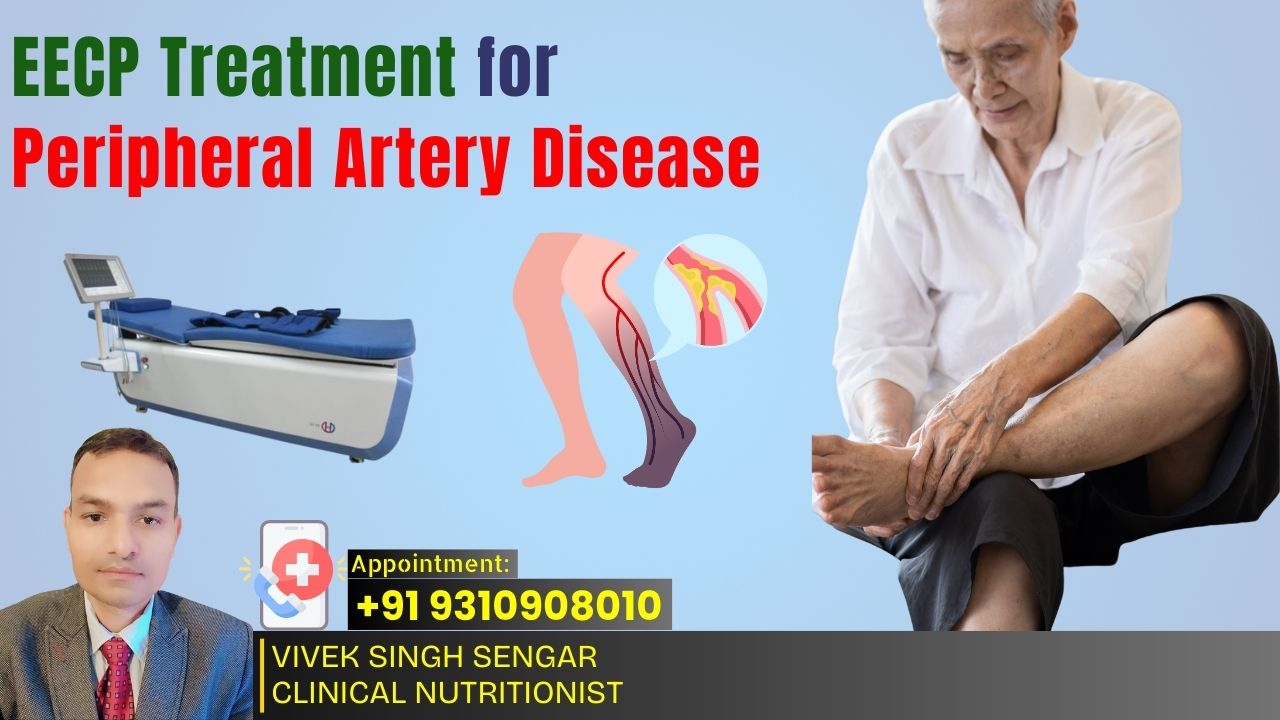EECP Treatment for Peripheral Artery Disease


Peripheral Artery Disease (PAD) is a common circulatory problem in which narrowed arteries reduce blood flow to the limbs. This condition primarily affects the legs and, in some cases, the arms, leading to symptoms such as pain, cramping, and fatigue, especially during walking or exercise. PAD is caused by the buildup of fatty deposits (atherosclerosis) in the arteries, which restricts blood flow and oxygen supply to the muscles.
PAD is a progressive disease, meaning that if left untreated, it can lead to severe complications such as non-healing wounds, infections, gangrene, and even amputation. The disease is also an indicator of widespread atherosclerosis, which increases the risk of heart attack and stroke. Therefore, early diagnosis and appropriate treatment are crucial to managing PAD and preventing severe health consequences.
The primary cause of PAD is atherosclerosis, a condition in which fatty deposits build up on the walls of the arteries, leading to narrowing and blockages. Several risk factors contribute to the development of atherosclerosis and PAD, including:
The conventional treatment of PAD includes lifestyle changes, medications, and, in severe cases, surgical interventions. Some of the commonly used treatments include:
While these treatments can be effective, they often come with risks such as complications from surgery, medication side effects, and recurrence of blockages.
Despite the availability of conventional treatments, there are several challenges in effectively managing PAD:
Enhanced External Counterpulsation (EECP) Therapy is a non-invasive treatment that improves blood circulation by stimulating the formation of new blood vessels. It involves the use of inflatable cuffs wrapped around the legs that inflate and deflate in sync with the patient’s heartbeat. This process enhances blood flow, reduces arterial stiffness, and promotes natural bypasses in blocked arteries.
EECP therapy works by increasing oxygen-rich blood supply to the affected limbs and stimulating the release of vascular endothelial growth factors (VEGF), which promote the formation of new blood vessels. The treatment also reduces inflammation, enhances endothelial function, and improves overall circulation, making it highly effective in managing PAD.
Recent studies have shown that EECP therapy provides significant improvements in PAD patients by enhancing blood flow, reducing pain, and preventing amputation. It serves as a promising alternative to invasive procedures and offers long-term benefits.
| Parameter | Conventional Treatment | EECP Treatment |
|---|---|---|
| Invasiveness | Surgical and medication-based | Non-invasive |
| Effectiveness | Varies; requires ongoing management | Promotes natural vessel formation |
| Risk Factors | High risk of complications | Low risk |
| Recovery Time | Weeks to months | No downtime |
| Cost | Expensive, especially for repeat procedures | Cost-effective |
EECP therapy is FDA-approved for angina and heart failure and has gained acceptance in several countries as a non-invasive treatment for cardiovascular diseases.
Several clinical studies have demonstrated the effectiveness of EECP in improving symptoms and quality of life in PAD patients. Research indicates that EECP enhances blood circulation, reduces pain, and promotes wound healing in patients with severe PAD.
NexIn Health is a pioneer in providing EECP therapy for various cardiovascular conditions, including Peripheral Artery Disease. With state-of-the-art facilities and experienced practitioners, NexIn Health offers a non-invasive solution for patients seeking an alternative to surgery.
EECP therapy is an innovative and effective treatment for Peripheral Artery Disease, providing a non-invasive alternative to conventional methods. It improves blood circulation, reduces symptoms, and prevents complications, making it a valuable option for PAD patients. With growing clinical evidence and international approvals, EECP is emerging as a game-changer in vascular health.